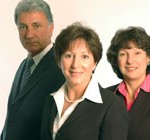 Older workers are a large and fast-growing part of the working population. Contrary to popular belief in America, and some other countries, at the age of 50 one’s brains do not fall out of your head, you do not automatically begin to drool, and you are still able to remember the way home after work. Unfortunately, some ageing Marthas and Melvins out there have given these workers a bad rap.
Older workers are a large and fast-growing part of the working population. Contrary to popular belief in America, and some other countries, at the age of 50 one’s brains do not fall out of your head, you do not automatically begin to drool, and you are still able to remember the way home after work. Unfortunately, some ageing Marthas and Melvins out there have given these workers a bad rap.
Some workers nearing retirement decide they will just coast their last two years or so at a company. The truth of the matter is probably that these folks were lousy employees all along and you didn’t have the nerve to fire them and now, as they near the grazing field of retirement, they have become sacred cows. Another case is that they feel useless and unappreciated and are just keeping a low profile. The scenario looks like this:
- They do the minimal amount of work to get by
- These scared cows are often popular with their co-workers
- Firing them could result in a grand mess of legal problems
- You may be years younger and fear challenging them
- They are not motivated by promotion or money
- They are not afraid of being fired
This may sound like a hopeless situation and you may feel that you are at the end of your rope when attempting to motivate your older charges who have fallen into this end of career abyss. Here are some ideas to consider to help get older workers involved and back in the game.
Make Them Mentors: Martha and Melvin can be mentors to new employees. The mentors will often clean up their act when matched with a younger worker. In addition, they both learn and benefit from each other’s experiences in both life and work. If they like to present, give them a role in orientation. They can share the history and culture like few others.
- Acknowledge and Use: Acknowledge the older workers experience. You might even have them begin a project for best practices. The older worker can contribute what he/she has learned and younger workers can contribute. This can be placed on the company’s intranet and used as a training tool.
- Establishing Timelines: Employees near retirement may have the sense of being deflated knowing that they will not be at the company to see the fruits of their hard work. Assign projects with short timelines and make Martha or Melvin aware that the project has a direct impact on the next month, quarter, or year. This may help them develop a sense of urgency, especially if your company has a good recognition program in place. People can even be invited back to the company for special ceremonies.
- Self-Monitor: When things go wrong or do not work as they should, often the best place to look is internally. Do you hold a negative biases toward older workers? You could be the source of creating low morale or feelings of uselessness even if you have not verbally stated these feelings. Your demeanor, body language, and general attitude toward anyone 10 or more years older than you might be more apparent than you realize.
- Special Projects: There may be special projects that might fit Martha and Melvin’s talents perfectly. This is part of the value of talent management and understanding every employee’s talents and how to put them to the best use. Being asked to work on a special project can lend strokes and light a fire under almost any employee – regardless of age.
- Special Service: Many of you are aware of the AT&T Pioneer group. According to their website, they have chalked up 3.9 million volunteer hours. Perhaps it’s time to look at such a group for your organization.
If your organization is to be truly diverse, all ages matter. Anyone in your organization can make a contribution and make a difference.








